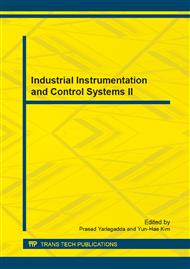p.1068
p.1072
p.1076
p.1080
p.1086
p.1092
p.1099
p.1103
p.1109
Distinction of the Property of Low Frequency Oscillation Based on ARMA Mode Identification
Abstract:
Aiming at how to solve the question of quantitatively distinguish negative damping low frequency oscillation and forced power oscillation, the difference in frequency and damping ratio between the two kinds of oscillations have been discovered through mechanism analysis, and a new quantitative distinction criterion for the property of the low frequency is proposed. The oscillation data is windowing identified by ARMA model based on weighted recursive least squares algorithm dynamically, and low frequency type can be distinguished according to the changes of oscillation frequency and damping ratio during the oscillation. The simulative results have shown that the method is feasible and effective.
Info:
Periodical:
Pages:
1086-1091
Citation:
Online since:
July 2013
Authors:
Price:
Сopyright:
© 2013 Trans Tech Publications Ltd. All Rights Reserved
Share:
Citation:


